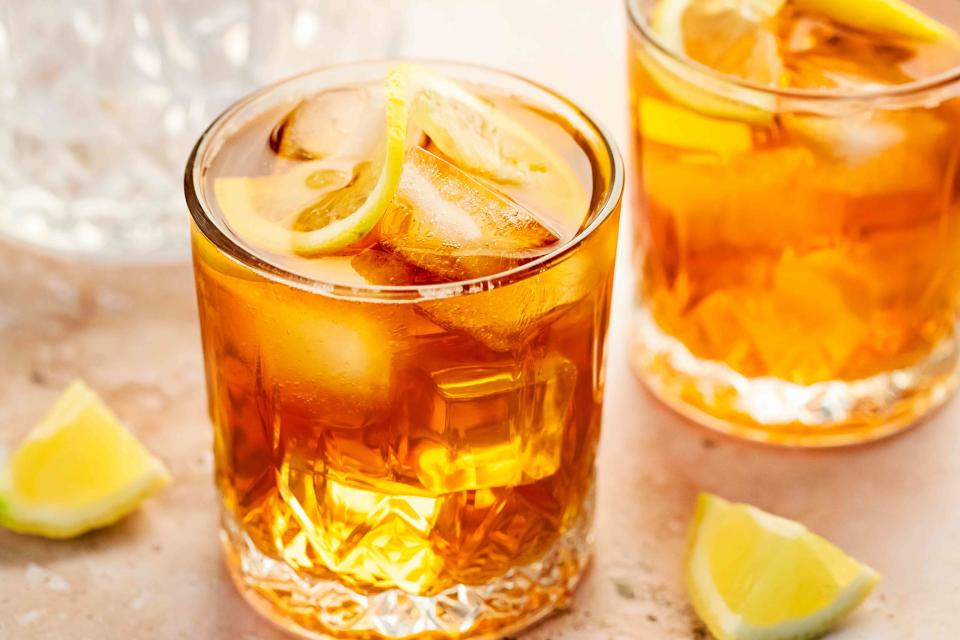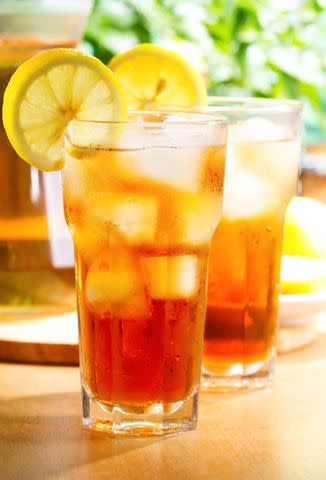For the Best Iced Tea, Don't Boil the Water
The very best method for making iced tea also happens to be the easiest.

Simply Recipes / Getty Images
Growing up in North Carolina, sweet tea was always on the table and it had two defining characteristics: very strong and very, very sweet. Just a whiff of a Luzianne tea bag sends me on a nostalgic trip to my childhood.
My mother brewed tea the same way every time: boiling water and a some-odd-minute steep. Her tea was a little murky with sediment from the tea bags, but I never saw this as a flaw. In fact, my mom’s highly tannic brew balanced the sweetness of the (ample) sugar she added with a hefty dose of bitterness.
I don’t make sweet tea for my own household (though I deeply enjoy big, ice-filled glasses of the stuff every time I go home for a visit), but in the summer there is no other beverage that quenches thirst like a glass of unsweetened iced tea.
However, without all that sugar the tannins (the compounds that give tea its bitterness) are more pronounced and the tea tastes less balanced. That’s why I never boil water when I make a batch of iced tea.
How I Brew Perfect Iced Tea Every Time
I just throw my tea bags (one bag per cup of water, or about a teaspoon of tea leaves per cup of water if you use loose-leaf tea) in a pitcher, fill the pitcher with cool water, and refrigerate it overnight.
The next day, I remove the tea bags or strain out the tea leaves and the tea is ready to drink. There’s no boiling, no need to let anything cool down, and no risk of over-steeping the tea.

Simply Recipes / Getty Images
Why This Method Works
Two primary factors affect tea’s flavor when brewed: water temperature and steeping time. There are different ideal temperatures for brewing different types of tea. For example, while it’s common to boil water when making black tea, green tea steeped at temperatures over 195°F tastes unpleasantly bitter.
How long you let the tea leaves steep in the water also changes the flavor. As you might guess, a longer steep leads to stronger tea.
All these variables might have your head spinning, which is one reason why cold brewing is such a great method. With cold brewing, both the time and temperature variables are moot. While it’s probably possible to over-steep cold brewed tea, I’ve yet to do it. The tea tastes great whether it’s been steeping for eight, 12, or 24 hours.
Tips for Cold Brewing Tea
This method works for any and all kinds of tea: black, green, white, herbal, you name it. It also produces a light, pleasant-tasting brew with minimal bitterness. The flavor of the tea itself comes through beautifully, allowing you to taste all its subtle nuances in a way that is rarely possible with hot brewed tea.
Even if you’re not really into tasting the “subtle nuances” of tea, this method is a game-changer simply because of its ease, and it works just as well with teas like Luzianne and Red Rose as it does with those you’d buy at a specialty shop.
The only thing to note about cold brewing tea is if you like to sweeten your cup (or the whole batch), it takes a little more time to incorporate the sweetener since the water is cold. I would start with a liquid sweetener like simple syrup or agave as it will dissolve more readily, but even granulated sugar will dissolve in time.
Read More: The 1-Ingredient Upgrade for Better Tea (It Costs Zero Dollars)
Read the original article on Simply Recipes.

